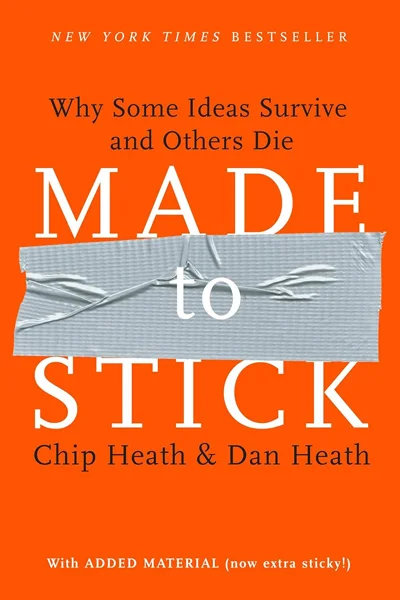
These 7 helpful tips from the book "Made to Stick: Why Some Ideas Survive and Others Die" by Chip and Dan Heese will teach you how to be persuasive and understandable. Don't forget there's a little assignment waiting for you at the end if you want to change for the better.
Let's not procrastinate, let's get going!
1. Keep the idea as simple as possible
Every person thinks differently. If for some your idea is obvious, for others it is like a riddle of the universe. To be understood, refuse unnecessary details, they are like unnecessary noise.
I'll tell you an example of an advertising campaign of a famous fast-food restaurant. They set up an experiment, inviting a VERY fat boy (150 kg) to participate in it and promised that he would lose weight by eating only their burgers for a month. And what do you think? During this month the boy lost as much as 30 kg! At the same time, the advertisers of the restaurant chain did not say that their burgers were made of natural products or were healthy, it was unnecessary. They simply showed the boy before and after the burger diet, breaking stereotypes in the heads of consumers. Net result.
2. The idea should have a familiar pattern to it
Imagine I'm trying to explain to you what a grapefruit is. If I tell you it's something shaped like a ball with yellow fuzzies and red flesh inside, will it make sense to you? No? Then let's say it's like an orange, but with red flesh and a bitter rind. It all makes sense, doesn't it? I've reached you with a familiar object. So if you want to convey your idea to others, refer to familiar things that everyone knows.
3. The easiest way to get attention is to break the pattern
The authors of the book "Made to Stick. Why Some Ideas Survive and Others Die" Chip and Dan Heese told a story about how math teachers of different categories were gathered for interviews. They were asked only one question, "How does math help you in life?" Many answered something about thinking, logic and more, but there was one who caught the attention of all the journalists in a second. All he said was that math doesn't help at all. Later he turned the situation in a different direction, but after his first sentence he was listened to without tearing up. That's called breaking the pattern. Try using it.
4. Concreteness = memorization
Now that we've touched on math, let's remember those tasks from school where Petya had 8 apples and Masha had 3 and... Pfft, that was boring and trivial. If modern schoolchildren were given tasks about likes in TikTok, they would be delighted. If the topic is in the context of a person's interests, they'll be immersed in what you tell them. Remember this.
5. Be different so you can be heard
This conclusion is similar to the third, but I want to share it separately. I tell a story from a Pocket PC presentation.
It was 1987, when many entrepreneurs were looking for investors for their ideas with the help of charts, graphs and listing the advantages of the product. But there was an insecure guy among them who had to present a pocket personal computer. He realized that he wouldn't get attention by the usual means, so as soon as he introduced himself, he threw a folder with documents right on the investors' table. They had no time to be outraged when he said that his small computer could fit many such folders. All this caused a huge reaction, after which the guy got his investment.
Try to stand out among others so your words don't sound like white noise.
6. The details in the story strengthen the arguments
Imagine you are a judge. This time, the defendant stole an old bicycle from the entryway of an apartment building. Not a terrible thing to do, right? What if I embellish it with an argument?
This bicycle was stolen from a little boy who only lived with his mother. She worked as a cleaner in a hospital and saved up for this bike for 8 months to make her terminally ill son happy. Sad story, but when you didn't know the details, treat the story differently. The same way works with your ideas. If you don't embellish an idea with interesting facts, it may not seem as appealing.
7. Details need to be compelling and humanizing
The authors of Made to Stick recalled a public service announcement that listed the number of pets injured by cars in a year, but almost no one paid attention to it. But if you turn to everyone and say, "Your Rex, whom you love, could also be among them if you walk him without a leash," it will touch a nerve. When you tell an idea by trying it on the listener, it sounds much more convincing.
Let's change together, shall we?
I hope that you are writing down the conclusions in your notebook and not just reading or listening to me. Anyway, I'm glad you're with me, but getting information is not enough, you need to consolidate it in practice, so....
I have an assignment for you:
If you've had some cool idea in your head for a long time, start taking the first step towards realizing it. If you've been wanting to write your book for a long time, for example, just start. Or maybe create a creative online store? Just gather the necessary information and start doing it.
This was a review of the book "Made to Stick: Why Some Ideas Survive and Others Die".